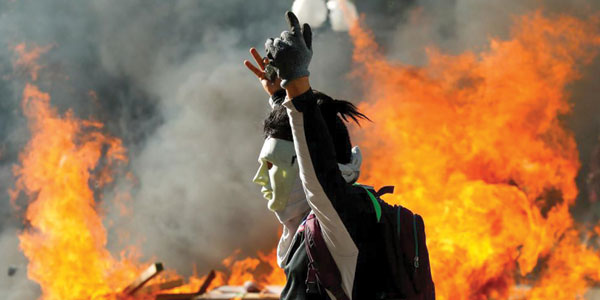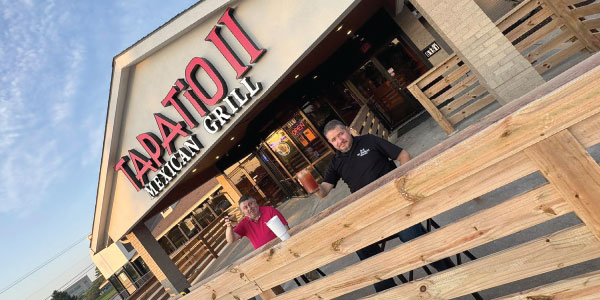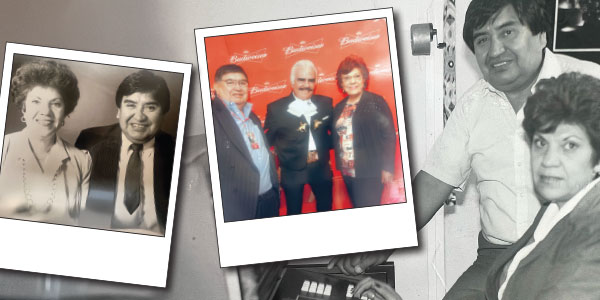
By Jorge Ramos
PEOPLE ARE NO LONGER REMAINING SILENT IN THE REGION, AND CONTINUED GOVERNMENT ATTEMPTS AT REPRESSION WILL ONLY MAKE MATTERS WORSE.
There is a rage brewing in Latin America.
Aware that they don’t live in real democracies, the people of Venezuela, Nicaragua and Bolivia are taking to the streets. In Chile, Ecuador and Haiti, citizens are angry about social inequality and the lack of economic opportunity.
Meanwhile, Argentina’s government is turning back to the Peronist-Kirchnerian left, and Mexico’s drug-related violence continues to spiral out of control. Other countries in the region aren’t faring much better.
Within this chaotic atmosphere in Latin America, there are three major aspects at play: Inequality, protests and social media, and authoritarian leanings.
Inequality
Latin America is still the most unequal region in the world; a huge gap continues to separate the wealthy and the poor. The sad lesson here is that while democracy is certainly necessary, it isn’t enough. From colonial times through today, Latin American economies have been set up for the benefit of the few. After decades of authoritarianism, many nations had hoped that, in addition to voting rights, economic welfare would be a reality for all. It was not to be.
I recently heard a young Chilean protester say this: “The poor people of Chile took to the streets because they can’t take it anymore. Because they want water. Because the government took away the rivers. Because they have us young people selling our lives on the streets to pay miserable fees. The people of Chile are finally awake, and they won’t fall asleep ever again.”
The president, Sebastián Piñera, has expressed his regrets. “I’m aware that we showed a complete lack of vision, and so I apologize to my fellow citizens,” he said in a nationally televised broadcast. But before he apologized he sent the military into the streets, resulting in several deaths, and established a curfew, the first declared in Chile since the end of Augusto Pinochet’s dictatorship.
When someone apologizes after the tanks have been sent in and people have died, it doesn’t seem particularly sincere. “Sending the military to restore order is a high-risk and sensitive decision,” José Miguel Vivanco, the director of Human Rights Watch for the Americas, told me in an interview. Mr. Vivanco pointed to Argentina, Chile and other countries where the military class has been associated with brutal dictatorships.
Something similar happened recently in Ecuador, where protests against the economic policies that President Lenín Moreno had put in place — after he had agreed to a controversial loan from the International Monetary Fund — were violently repressed. The United Nations received allegations of human rights abuses by the government’s security forces, and Ecuador’s ombudsman’s office reported that as many as 10 people had been killed and over 1,000 injured.
“Bloody repression?” asked José Valencia, Ecuador’s minister of foreign affairs, when I interviewed him. “No, because the police didn’t cause those deaths; those were accidents during the protests. The police, as far as we know, behaved appropriately and proportionally, given the situation.”
It’s hard to believe that all those deaths were accidental. Who gave the order to attack the protesters? Who fired the tear gas? And what about those in uniform who assaulted demonstrators with their truncheons? People who are simply complaining about the deplorable economic conditions in which they live don’t deserve such treatment.
Protests and Social Media
Nicolás Maduro, the Venezuelan dictator, has tried to take credit for the demonstrations occurring in other South American countries. “We are following the São Paulo Forum plan” he said recently, referring to a purported joint action agreed to by the group of left-wing Latin American parties and organizations.
There is no evidence of any such coordinated action. But even if there were, it wouldn’t explain the one million people on the streets of Santiago, the Chilean capital, or the huge demonstrations in Haiti.
Those demonstrations were possible only because democracy has created new spaces for protest, which in the past was not allowed, whether in Pinochet’s Chile or in Argentina, during the junta, or elsewhere.
But today demonstrators aren’t afraid. Social media and mobile technology have made it easy to organize effective protests, allowing young people to overcome government censorship and control. Official communications are balanced by millions of videos, photographs and texts on Twitter, Instagram and Facebook.
And once legitimacy and credibility are lost on social media, no government can rule.
Authoritarian Leanings
Latin America has never gotten over its attraction to authoritarianism. Ever since Simón Bolívar, who had become dictator of Peru, toyed with the idea of becoming president for life of the short-lived state of Gran Colombia, others have followed.
Today, Latin America has its fair share of dictators. Both Mr. Maduro in Venezuela and the husband-and-wife duo of Daniel Ortega and Rosario Murillo in Nicaragua have rigged elections and committed human rights violations in order to hold on to power. Cuba has shown us how 60 years of repression can be normalized: Miguel Díaz-Canel was recently handpicked to succeed the dictator Raúl Castro, Fidel’s brother.
In Bolivia, President Evo Morales resigned on Sunday after widespread protests over an October election that many saw as rigged, marking a dramatic end to a nearly 14-year reign. In a 2016 referendum, the Bolivian people rejected a measure that would have allowed Mr. Morales to run for a fourth term. He ran in October anyway, but the protests didn’t stop.
The time for staying quiet is over. Latin Americans are no longer keeping their dissatisfaction to themselves. What’s new about this recent wave of protests is that official censorship is out, while new digital technologies for sharing popular grievances and coming together in protest are in. Unfortunately, Latin American governments have always responded in the same way: with repression.
But this tactic is no longer working. The protests in Ecuador may reignite at the slightest provocation. The honeymoon enjoyed by Mexico’s new president, Andrés Manuel López Obrador, may soon end if drug-related killings continue. The dictators in Venezuela, Nicaragua and Cuba can’t even seem to control their message.
First they lose the media, then they lose the streets. This discomfort and anger are an omen. Come what may, nothing will remain the same.
_________________________________________________________________________________________
El malestar en América Latina
EN LA REGIÓN MÁS DESIGUAL DEL MUNDO, LOS CIUDADANOS HAN DEJADO DE CALLAR SU DESCONTENTO. ESE ENOJO NO SE APAGA CON LA REPRESIÓN ESTATAL, SINO CON ESCUCHAR LO QUE LA SOCIEDAD PIDE. Y SE ACABA EL TIEMPO.
América Latina está enojadísima.
En Venezuela, Nicaragua y Bolivia se protesta por falta de democracia; en Chile, Ecuador y Haití, por falta de oportunidades y mayor igualdad. Mientras tanto, entre la indiferencia y el aislacionismo trumpiano, Argentina regresa a la izquierda peronista-kirchnerista, México no ve la salida a la creciente espiral de la narcoviolencia y, por supuesto, hay otros países temblando.
En todo este aparente caos latinoamericano, destacan tres tendencias.
La desigualdad
América Latina es la región más desigual del mundo. Sus ricos y no tan ricos están muy separados de sus muchos pobres y no tan pobres. La triste lección es que la democracia es necesaria pero no suficiente. Desde la Colonia hasta nuestros días, las economías latinoamericanas han estado organizadas para el beneficio de unos pocos. Luego de décadas de dictaduras y gobiernos autoritarios, muchos países —además de elegir a sus líderes con votos— esperaban una época de bienestar económico para todos. No fue así.
Esto lo escuché de una joven manifestante chilena: “El pueblo pobre de Chile se levantó porque no aguanta más. Porque quiere agua. Porque nos quitaron los ríos. Porque nos tienen a los jóvenes vendiendo nuestra vida en las calles para pagar unas cuotas miserables. El pueblo de Chile despertó y despertó para no dormirse nunca más”.
El presidente chileno, Sebastián Piñera, se disculpó. “Reconozco esta falta de visión y le pido perdón a mis compatriotas”, dijo por televisión nacional. Pero antes ya había sacado a los militares a las calles y levantado un toque de queda; era la primera vez que esto ocurría desde el fin de la dictadura de Augusto Pinochet.
Las disculpas después de los tanques y los muertos no suelen ser muy efectivas. “Recurrir a militares para reestablecer el orden público es una medida delicada y de alto riesgo”, me dijo en una entrevista José Miguel Vivanco, director para las Américas de Human Rights Watch. Vivanco refirió los ejemplos de Argentina, Chile y otros países donde el estamento militar ha estado asociado con dictaduras brutales.
Algo similar ocurrió en Ecuador, donde las protestas contra las medidas económicas tomadas por el presidente Lenín Moreno, tras aceptar un polémico préstamo del Fondo Monetario Internacional, fueron sangrientamente reprimidas. Las Naciones Unidas recibió “alegaciones de violaciones a los derechos humanos que habrían cometido fuerzas de seguridad del Estado”, mientras la Defensoría del Pueblo informó de una decena de muertos y más de mil heridos.
Cuando le pregunté por la represión al canciller ecuatoriano, José Valencia, contestó: “No es así, porque los muertos no fueron fruto de la acción de la policía sino accidentes en el marco de las manifestaciones […]. La policía reaccionó de una manera que, nosotros creemos, fue adecuada y proporcional”. Es difícil creer que los muertos y los heridos sean solo por accidentes. ¿Quién dio la orden de atacar a los manifestantes? ¿Quién disparó lo gases lacrimógenos? ¿Y los uniformados que atacaron a jóvenes con sus macanas y motocicletas? Eso no se hace contra gente que se queja de sus deplorables condiciones económicas.
La desigualdad no se vence a golpes y disparos.
Las protestas y las redes sociales
El dictador venezolano, Nicolás Maduro, se quiso tomar el crédito de las protestas en otros países sudamericanos. “Estamos cumpliendo el plan, Foro de São Paulo”, dijo recientemente, refiriéndose a una supuesta acción concertada del grupo de partidos y organizaciones latinoamericanas que promueven ideas de izquierda. No hay pruebas de esta acción. Pero así fuera cierta, eso no explica la manifestación de más de un millón de personas en Santiago ni las marchas masivas en Haití.
Las manifestaciones son en realidad producto de los nuevos espacios creados por la democracia; en las dictaduras de Pinochet, de Videla en Argentina o en el México de 1968, ciudadanos fueron masacrados por protestar. Hoy ya no tienen miedo. Pero también las protestas se dan y se organizan gracias a las nuevas tecnologías —desde internet y las redes sociales hasta el uso omnipresente de los celulares— que logran burlar cualquier intento de control y censura oficial. Los cuadrados comunicados oficiales tienen que competir en Twitter, Instagram y Facebook con la fluidez de millones de videos, fotos y textos que los contradicen.
Ya no se puede gobernar si se pierde la legitimidad y la credibilidad en las redes.
La tentación autoritaria
América Latina nunca ha dejado atrás su tentación autoritaria. Desde que Simón Bolívar fue declarado dictador de Perú y jugó con la idea de un presidente vitalicio para la Gran Colombia, otros han seguido sus pasos.
Hoy tenemos varios dictadores en América Latina. Nicolás Maduro en Venezuela y la dupla Daniel Ortega-Rosario Murillo en Nicaragua han falseado elecciones y violado ferozmente los derechos humanos para atornillarse un poquito más en el poder. Cuba es un ejemplo increíble de cómo se han normalizado sesenta años de represión brutal. De las dictaduras de Fidel y Raúl Castro se dio el dedazo para que las continuara Miguel Díaz-Canel. Y Evo Morales no entiende que no significa no. Eso es lo que le dijeron los bolivianos en el referéndum de 2016, prohibiéndole la reelección. Ya lleva casi 14 años en el poder y busca más. Pero las protestas no paran. El caudillismo y la mano dura nunca han sido la solución de los problemas que afligen a América Latina.
Se acabó la época del silencio y el acomodo. Los latinoamericanos han dejado de callar su descontento. Y ese enojo no se apaga con manguerazos de agua.
Lo nuevo en la reciente ola de protestas es la desaparición de la censura oficial y la aparición de nuevas tecnologías digitales para compartir el descontento y sumar fuerzas para protestar. Desafortunadamente, la respuesta de los gobiernos hasta ahora han sido la misma de siempre: reprimir.
Pero ya ni eso está funcionando. Se acaba el tiempo para escuchar. De nada sirve que en Chile se pida perdón si los soldados siguen en la calle y no se cambia la constitución. Las protestas en Ecuador pueden resurgir a la menor provocación. Se le puede terminar la larga luna de miel a Andrés Manuel López Obrador en México si no da resultados y siguen las matanzas. Bolivia se resiste a cinco años más de Evo. Y nuestros dictadorzuelos de turno en Venezuela, Nicaragua y Cuba han perdido el control del mensaje.
Primero se pierden las redes y luego las calles. El malestar y el enojo son un presagio. Pase lo que pase, las cosas ya no pueden seguir igual.










